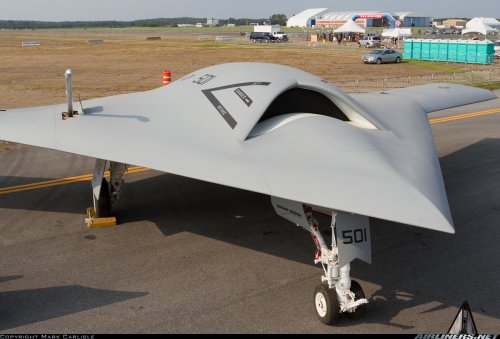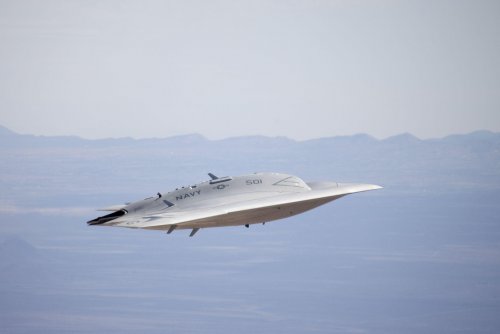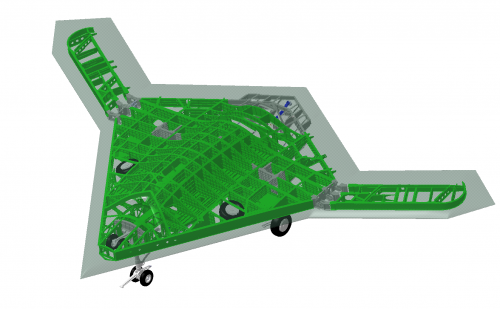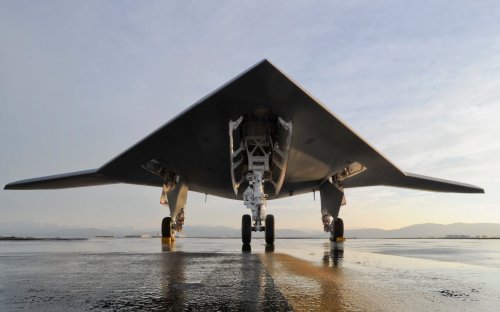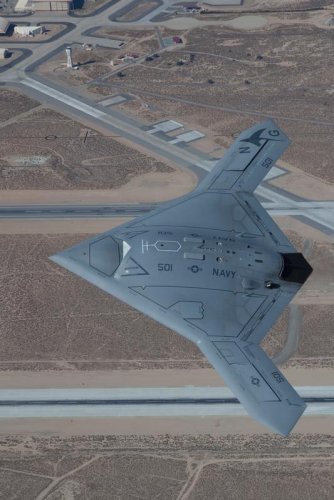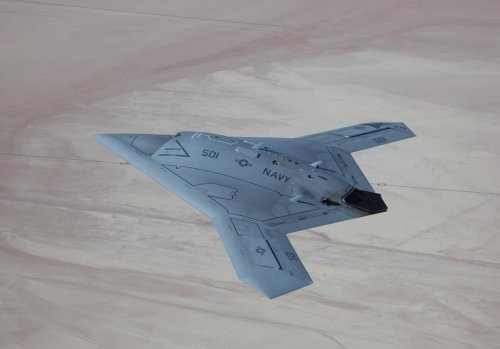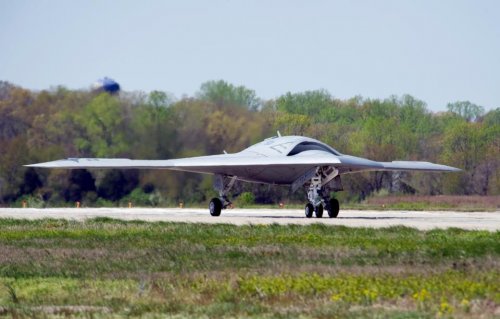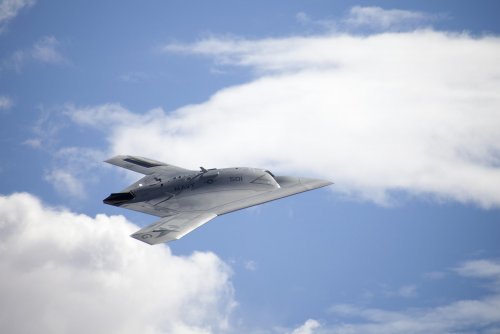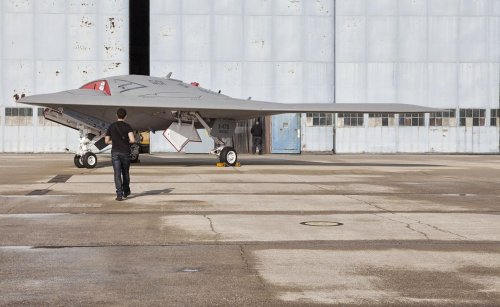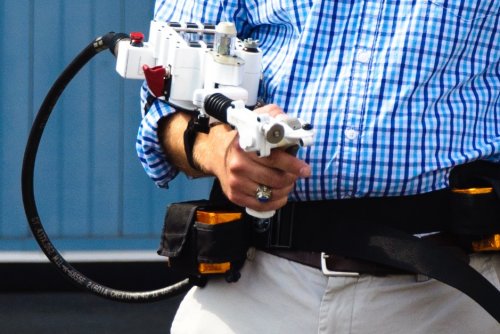http://www.navair.navy.mil/index.cfm?fuseaction=home.NAVAIRNewsStory&id=5020
(PROCEED TO THE LINK TO GET TWO NEW HI-RES PICS OF X-47B)
NAVAL AIR SYSTEMS COMMAND, PATUXENT RIVER, Md. – It was not an ordinary morning at Pax River when a large flatbed truck hauling the fighter-sized X-47B Unmanned Combat Air System Demonstrator (UCAS-D) entered through the naval air station’s gate.
Navy and Northrop Grumman personnel welcomed the second X-47B, known as Air Vehicle (AV) 2, June 14 after its cross-country drive from Edwards Air Force Base, Calif., where the aircraft spent the past six months completing initial flight tests.
“Our initial test phase at Edwards Air Force Base was very successful, and I am confident we will see the same success at Pax River as we prepare for shore-based carrier suitability tests in the fall,” said Capt. Jaime Engdahl, Navy UCAS program manager.
Engdahl said he was impressed with AV-2’s performance at Edwards and although it was the second aircraft to fly, it achieved several significant firsts for what he refers to as “Team UCAS.” On a single day in May, AV-2 flew two consecutive flights; completed a heavy-weight landing; reached a high-speed test point; and completed a touch-and-go for the first time.
AV-2 is identical to its sister aircraft, except it incorporates the hardware required to perform autonomous aerial refueling (AAR), a technology the UCAS-D team has been developing to fuel unmanned aircraft in flight.
The Navy UCAS program is a demonstration intended to identify and reduce technical risks associated with developing potential future unmanned, carrier-compatible systems. The program will also demonstrate an AAR capability, which has the potential to significantly increase the endurance and range of carrier-based unmanned aircraft.
(PHOTO) The second X-47B, known as Air Vehicle (AV) 2, arrives at Naval Air Station Patuxent River, Md., June 14 after its cross-country drive from Edwards Air Force Base, Calif. AV-2 is identical to its sister aircraft, which arrived at Pax on Dec. 20, except it incorporates the hardware required to perform autonomous aerial refueling (AAR), a technology the UCAS-D team has been developing to fuel unmanned aircraft in flight. (U.S. Navy photo by Steven Kays)



